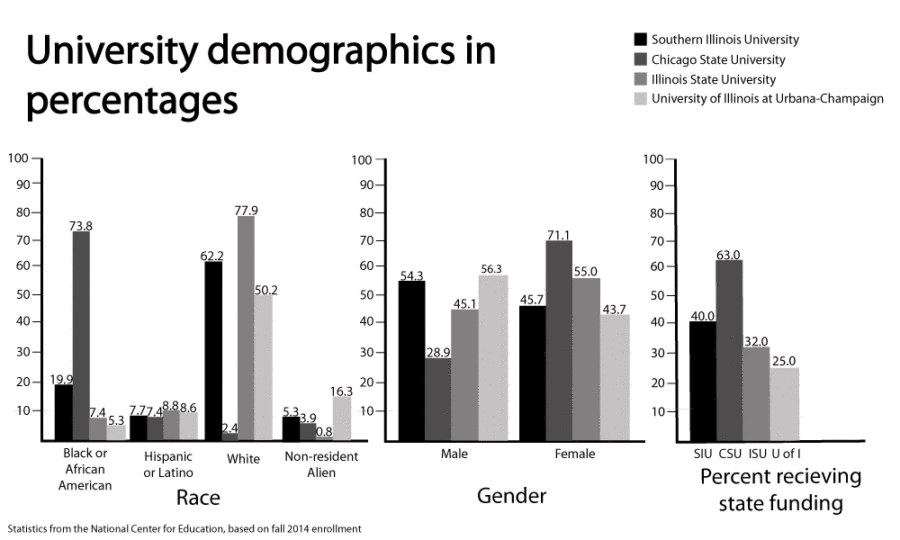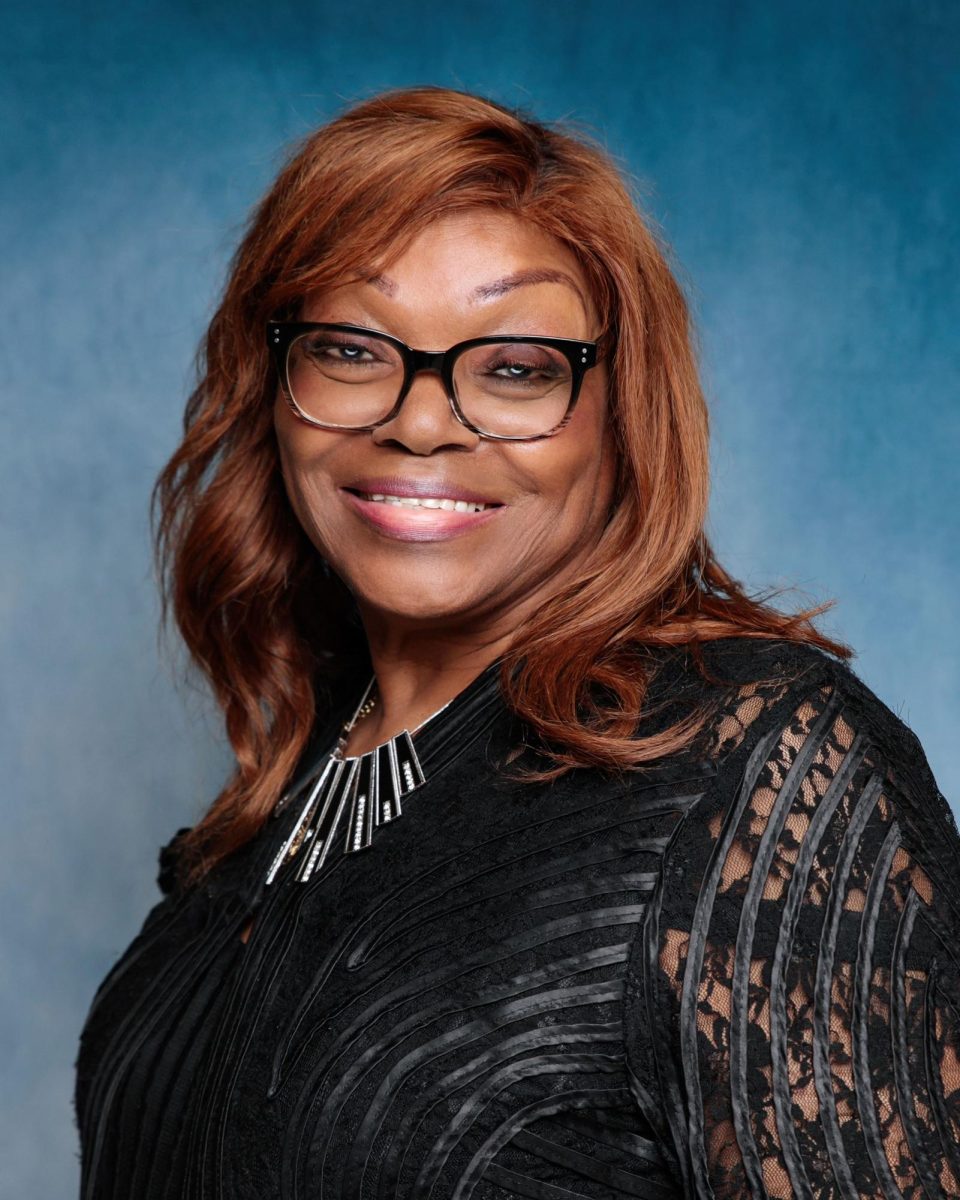Effects of Chicago State’s funding crisis run deep
February 22, 2016
Charles Preston, a senior at Chicago State University, wants to pursue a master’s degree after he graduates in December — if he can.
“If the school closes, basically I’m in limbo,” said Preston, who is majoring in African-American studies. “I don’t know what I will do after.”
Chicago State is just one of the 12 public universities in Illinois that have received no state money since July 1.
Advertisement
Located in the Roseland neighborhood on the South Side of Chicago, Chicago State is the only public university in Illinois with a majority-black student population. It’s wedged between a row of some of the most impoverished communities in the city.
An Africana studies professor at SIU said she has seen no evidence that shows the situation at CSU is related to race, but it is a possibility.
“A lot of times when things go badly, the black community is usually the one that suffers,” said Pamela Smoot, who added that the situation is depressing.
There were about 5,000 students enrolled at Chicago State in 2014, according to the National Center for Education Statistics. About 73 percent of those students were black and 63 percent of students received Monetary Award Program grants. At SIU, about 20 percent of the 17,989 enrollees were black and 40 percent of students received the MAP grant.
And as Illinois approaches its ninth month with no spending plan, administrators at CSU are taking things literally day by day, said university spokesman Tom Wogan.
“We did not imagine we would be eight months into a fiscal year with no allocation whatsoever,” Wogan said. “If the state continues to not take action then a number of campuses — not just CSU — are going to start facing very real problems for lack of operating dollars moving forward.”
The university last received an appropriation of $38 million for operating costs in fiscal year 2015. Republican Gov. Bruce Rauner last week proposed a spending reduction of 24 percent for CSU next year.
Advertisement*
During the past few months Preston has spent a portion of his class time participating in marches and demonstrations around Chicago. Last week he went to Springfield for Rauner’s budget message, where a handful of SIU students and faculty protested as well. In January he walked down Chicago’s Interstate 90/94 with fellow students, effectively shutting down southbound traffic.
“We’ve just been trying to raise awareness around this issue however we can,” Preston said. “We will not let our institution close.”
Chicago State is an oasis in the desert — a safe haven in the midst of neighborhood plagued by poverty and violent crime, Preston said.
Preston grew up in Roseland, but went off to the University of Missouri in 2009. Moving from a predominately black area on the South Side of Chicago to Columbia, Mo., was foreign to him.
“I couldn’t deal with the culture of Mizzou,” Preston said. “The school wasn’t a good fit for me and I wasn’t comfortable there.”
After a year of feeling like a fish out of water, he had to go back home. He worked off debt until he was financially prepared to go back to college and enrolled in Chicago State.
“I kind of acclimated myself to Chicago State University and it became almost like a second home,” Preston said. “Now under this budget impasse and the ineptitude of [Rauner] and the Illinois General Assembly, I feel like my home is being attacked and I have to protect it.”
Chicago State offers one of the lowest tuition rates in Illinois, making it a viable option for members of the Roseland community. The average student is about 30 years old and a large portion transfer in from two-year colleges in Chicago, Wogan said.
Media reports in January indicated Chicago State did not have the finances to fund payroll come March 1. The cash-strapped university declared financial exigency in early February, giving administrators authority to make emergency budget cuts wherever necessary — including tenured faculty — to stay afloat.
The university has reduced 175 faculty and administrative jobs and made a 20 percent cut to administration costs through consolidation of positions and hiring freezes. Cuts to programs, services and faculty will likely be “the unfortunate theme throughout Illinois” in the coming months if no state appropriation comes, Wogan said.
“We’ve reached a point where we can’t cut our way out of this anymore,” he said. “We’re going to keep putting pressure on the governor and the legislature in hopes that the state is going to honor its commitment to higher education.”
In the meantime, Preston has decided put some of his future plans on hold.
“I can’t even think about [graduate] school right now because the university is going through this crisis,” he said.
Chicago Mayor Rahm Emanuel shut down about 50 public schools in the city, most of which were in impoverished neighborhoods. That, plus the situation at Chicago State, makes Preston feel as though the state doesn’t care about black education.
In Roseland, where crime is one of few alternatives for people of low-income and limited opportunities, Preston said the thought of losing a resource like Chicago State in his neighborhood makes him angry.
“I’ve known people who had a past life in criminality before Chicago State, and it totally changes their minds,” Preston said. “The school basically changes the narrative of what is currently South Side Chicago.”
{{tncms-asset app=”editorial” id=”9f51f576-d9f5-11e5-bced-53ffeff77cdd”}}
Bill Lukitsch can be reached at [email protected] or 618-536-3329.
Advertisement









